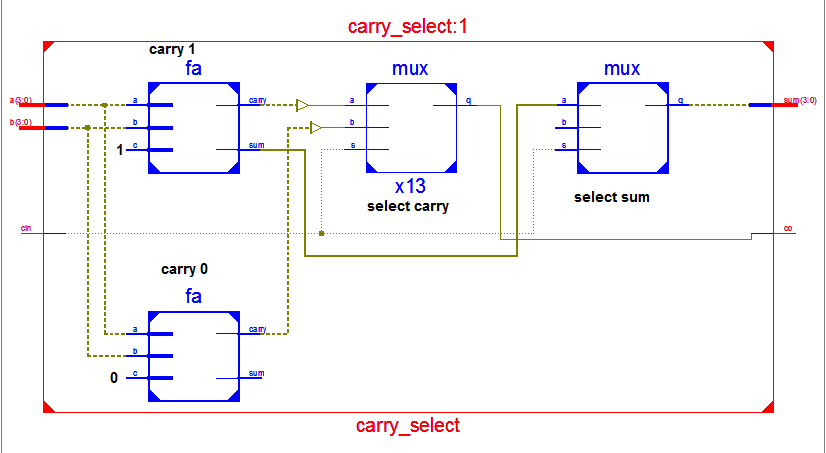Verilog Code For Serial Adder Data
Verilog Comparator Example Verilog Tutorial. In our first verilog code, we will start with the design of a simple comparator to start understanding the Verilog language. This will extend our Hello World example to create. Let us take a look at the following table which describes the behaviour of a comparator circuit. Table A one bit comparator Input x Input y Output z 0. Basically when both the inputs x and y are same, the output z is 1. When the inputs are unequal, the output is 0. We can describe the circuit using AND,NOT and OR gates using the following equation. The following shows a circuit that implements this logic. And here is the verilog code that implements this logic. We will try to make you understand what Verilog is in a matter of one day. At least you should be able to compile and run verilog code. We hope that this is something you will be able to achieve within next few pages. Throughout this tutorial we will present you enough examples. While Verilog has concurrent blocks executing in parallel, it is still similar to software programming language like C. If you have closely watched the schematics above and the verilog code below it, you must have appreciated how verilog simplifies the process of hardware design. Before the advent of Verilog, everything was done using schematics. The Schematics were error prone, difficult to verify and had long. Retrouvez toutes les discothque Marseille et se retrouver dans les plus grandes soires en discothque Marseille. Let us look at the source code for the implemmentation of a full adder fulladder. With Verilog the whole dimension and process of hardware circuit design changed. This provided a new kind of abstraction where the details of implemmentation. Verilog design is more like a software programming, but, you must also have a strong understanding of the circuit that works behind the code. Let us now understand the code. Zipcores is a leading provider of IP Cores and custom design solutions for FPGA and ASIC devices. Take a look at. module comparatorinput x,input y,output z. Verilog consists of modules. Inside the modules we have a list of ports or pins. A port can be an input or an output depending upon its direction. A pin can also be defined as. Dwg File Viewer there. The direction can also be specified out of the module. This code is equivalent to the previous code. Let us now take a look at the assign statement. This implements a combinational logic. An assign statement is used for modeling only combinational logic. The statement in the assign statement is executed continuously as against those that trigger on a clock. An assign statement is also called continuous assignment statement. This statement implements the comparator logic that we had shown earlier in example. Change Code and Exercize Now the fun part of the tutorial. The code is reproduced in below. It does not give any output, but it also does not has any syntax error. If you make any error and click on Edit Verilog Code and Click Here, it will give an error. Now the exercize. Change the code such that it give assigns 1 when the two inputs are unequal. Change the variable names from x, y z to something more meaningful like input. Change module name from comparator to something like unequal. Make sure you do not get any compile errors. We will not see anything in the output window, but that is fine we will have something more exciting in next page. Save the code in a text file in your computer. We will use it later. In the next page we will see how to test this code using the simulation. The Spartixed evaluation board from Reference Designer has been released for sale and can be purchased. It is a very low cost 3. For 5. 5 you can purchase ann Spartan 6 Evaluation board plus a programmer. We have put together the learning material for using the Spartixed here namenextbutton on. Clickwindow. locationhttp verilog0.
